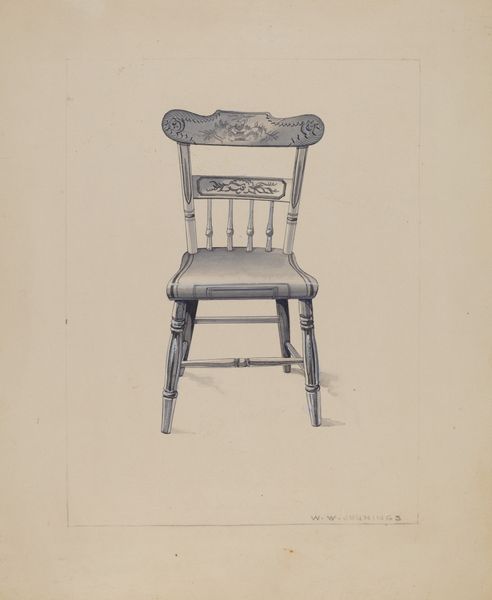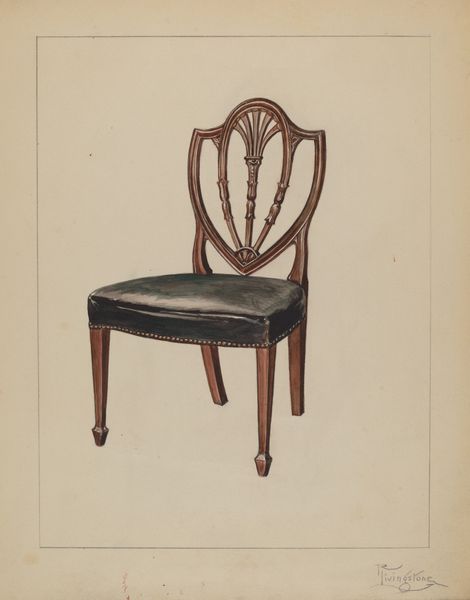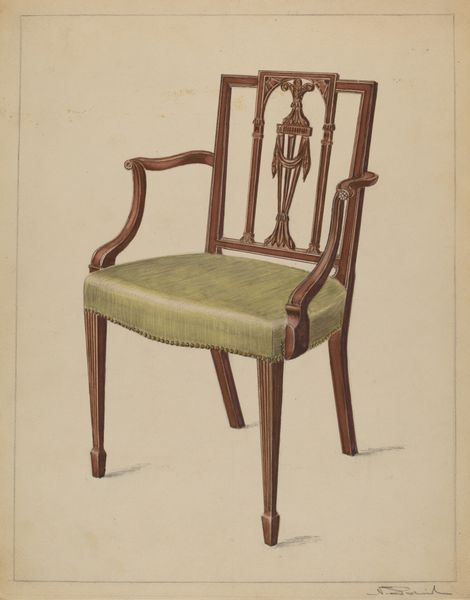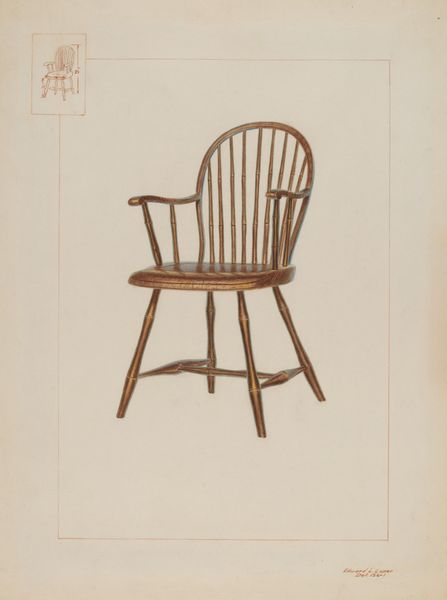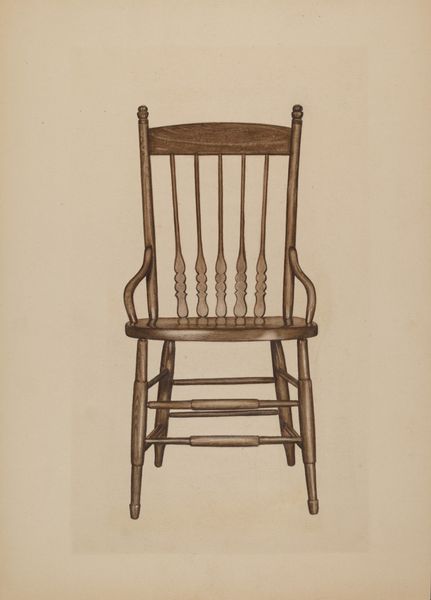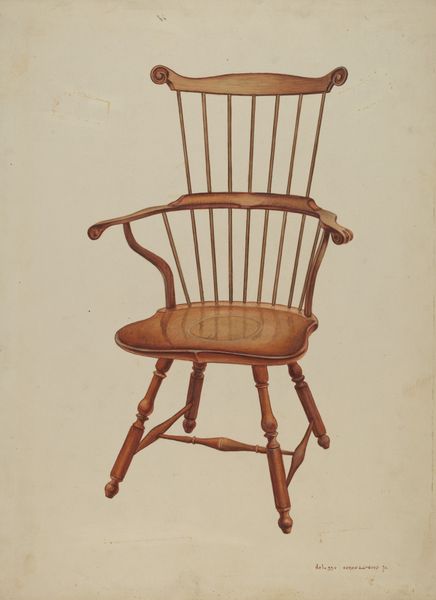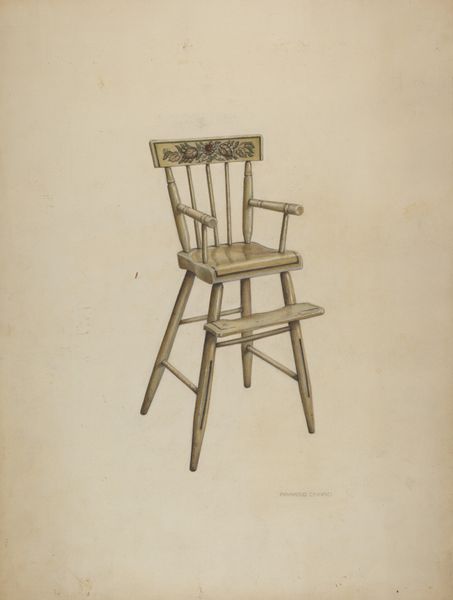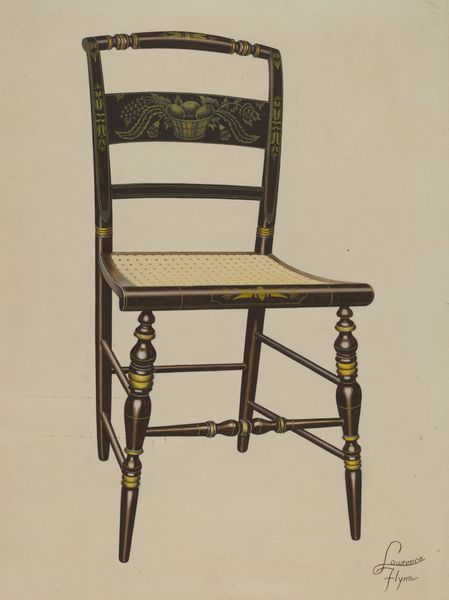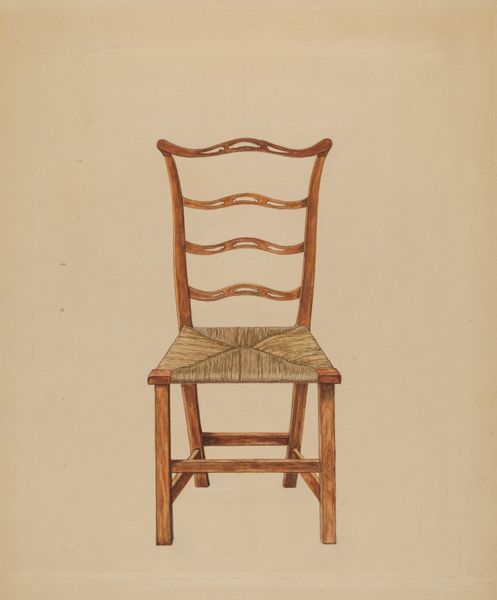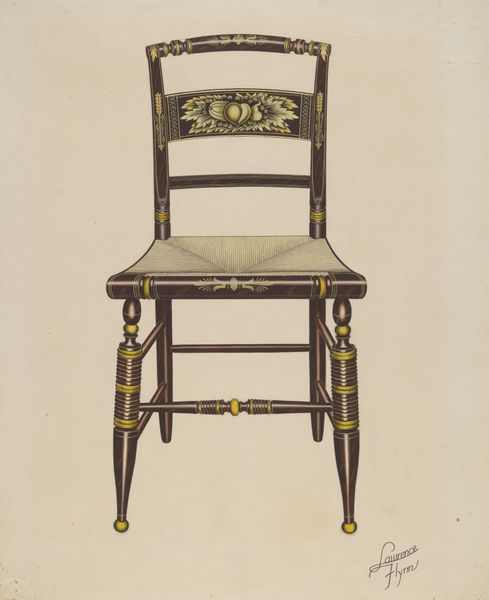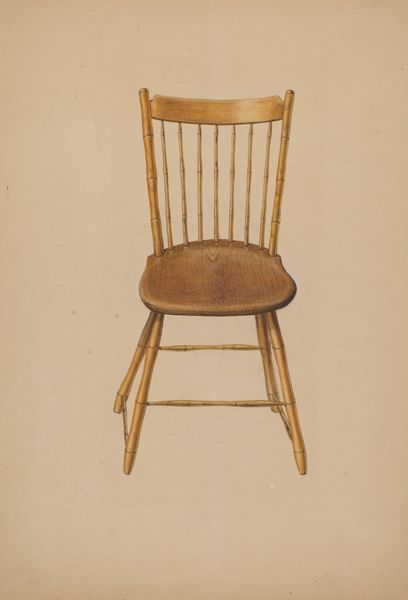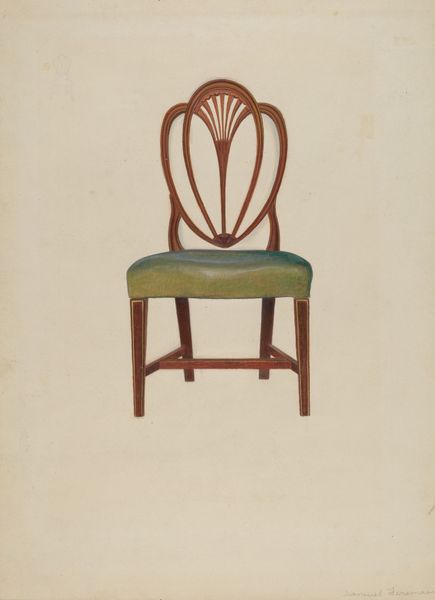
drawing, mixed-media, watercolor
#
drawing
#
mixed-media
#
charcoal drawing
#
watercolor
#
watercolour illustration
#
academic-art
#
watercolor
Dimensions: overall: 35.5 x 24.2 cm (14 x 9 1/2 in.) Original IAD Object: 2'2 1/2"high. Seat 1'3" x 1'5 3/4"
Copyright: National Gallery of Art: CC0 1.0
Curator: Isn't it funny how an object, as simple as a chair, can speak volumes? This piece, titled "Rush Bottom Chair," was rendered between 1935 and 1942 by Samuel O. Klein. He worked with watercolor, mixed media, and a bit of charcoal. I sense a ghost of usefulness—it could almost creak. What are your thoughts? Editor: Well, it immediately brings to mind notions of labor. A chair is such a fundamentally material object—wood harvested, shaped, joined, then the rush carefully woven for the seat. All these distinct stages dependent on very particular sets of skilled labor, very tangible effort. Curator: Absolutely! I feel like he's also capturing a feeling here, beyond the process, almost as though memory is infused within it. The artist highlights, very softly, how light moves over its surface. Look closely, the ghost of someone seated... years of use rendered almost spectral! Does that make sense? Editor: I agree, and notice that along the bottom edge we find elevation sketches, schematic views that suggest a mass production process, despite its down-home aura. Watercolor, drawing, the whole history is very self-conscious, as though wanting to locate value somewhere between folk craft and industrial design. The dimensions noted give us an intimate peek behind the curtain. Curator: So true! Klein walks a fascinating tightrope, imbuing utilitarian design with artistic emotion. It seems almost like an ode to everydayness, wouldn’t you agree? The quiet beauty found within familiar objects, their shapes resonating within the home... Editor: Which raises a compelling question: Whose home, and what sort of labor sustained it? These were the depression years; Klein was documenting vernacular arts and crafts, an uneasy space that exists within class aspirations and harsh economic realities. How do we value a chair beyond its function as mere support? Curator: Such profound perspectives. You have altered how I perceived this delicate mixed-media work today. It makes me contemplate chairs differently, always, which, I realize, is what makes encounters with artwork feel genuinely important to me. Editor: Well, from the hands that created it to the bodies that rest upon it, a chair's existence—even a drawn one—invites endless questions.
Comments
No comments
Be the first to comment and join the conversation on the ultimate creative platform.
